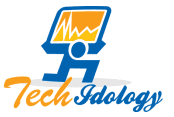10 Best UI/UX Design Tools To Learn in 2022
Are you a designer? UI/UX design tools will help you create functional and visually appealing digital applications. You’ll need the best tools, whether you focus on user experience design, user interface design, or some combination of the two.
Having the right UX/UX design tool will help you in:
- Prototyping
- Testing
- Handoff
- Wireframing
In this article, we’ll look at 10 UI/UX design tools that can help you make better products, whether you’re making a new website that’s super easy to navigate or testing out an idea for market viability.
Table of Contents
1. Sketch
Sketch advertises itself as an all-inclusive software suitable for designers. It aims to provide insight into every stage of the creative process. The tool has more than 700 extensions.
It has some simple but effective vector editing tools. You can quickly and easily change your work at any point in the design process. The sketch was originally a Mac-only application, but it has since expanded to incorporate a web app with tools compatible with any search engine.
The tool’s limitless Canvas, interchangeable Artboards, and customizable defaults will give you complete creative freedom. You can quickly adapt your content to any display size using flexible grids and streamlined resizing tools.
The tool supports variable fonts, giving you complete control over the visual elements in your creations. It supports open-type functionalities, and you’ll also access features like alternate characters, ligatures, and more.
2. Adobe XD
Adobe Photoshop and Illustrator are household names because they are the gold standard in graphic design. Adobe’s Creative Cloud encompasses these high-profile programs, which are helpful for user experience and interface design. When it comes to making vector artwork and illustrations, Adobe Illustrator is unrivaled.
Nevertheless, some Creative Cloud is designed for UI/UX designers. You will build web pages, applications, company logos, and game design prototypes with Adobe XD.
The tool has various sophisticated functionalities to help you with design and testing. It has vector drawing, 3D transformations, reusable parts, repeat grids, auto-animation, and content-aware design tools.
The tool’s voice-enabled functionalities will allow you to generate voice commands and incorporate audio into your design to make them more user-friendly.
3. Balsamiq
Balsamiq is a UI design tool that mimics the feel of drawing on paper or a whiteboard. You can use the tool to visualize the template of your forthcoming app or webpage.
You’ll need to create a perfect interface structure to complete your visual design. Balsamiq will prevent you from getting sidetracked by unnecessary aesthetic considerations like color palettes so you can focus on content and the structure.
The tool’s linking functionalities will allow you to create simple designs for mockups or testing. When brainstorming ideas for a project, Balsamiq can be a helpful tool. It’s intentionally built to resemble sketches to trigger creativeness.
4. InVision Freehand
InVision Freehand is a unified online whiteboard. Even though it has many applications within a company, the design teams will benefit the most from it. With a comprehensive, shared platform, you can link each stage of the design process.
You’ll also be able to add users and other interested parties into the design phase. Freehand will help enhance creativity, collaboration, and inclusivity at each phase of your project. You’ll get a blueprint for each part of the design process, including strategy and planning.
5. Axure RP
Axure RP lets UX experts create feasibly working prototypes with an infinite number of action prompts, situations, and activities to test website designs. You can make drawings, user experience, mockups, and other UX documentation alongside your extensive, responsive UX designs.
In addition, users can make interactive forms, grids with filtering options, and user interfaces that respond to user input with the help of Axure RP widgets. For instance, you can create text boxes, dropdown menus, and radio buttons to work with a simple drag and drop.
Furthermore, you can design anything from pop-ups to scroll and swipe phone screens with the help of multi-state dynamic panels.
The tool supports adaptive views for PCs, iPad, or smartphones. The system is smart enough to know when to display the correct view. With the click of a button, you can publish your RP UX prototypes to Axure Cloud, where team members can view them and provide feedback in real-time.
6. Framer
Framer is a potent UI/UX design tool that you can use to develop exquisite immersive creations entirely on the canvas. You can quickly create workable applications and websites with pre-made design features, refined assets, configuration tools, and other features. It’s easy to create UI for MacOS, Android, and iPhones with Framer.
You can select from various pre-made templates to save time and get a head start on your project. Framer makes bringing others into your task simple, from user interface concept design to handover. The canvas will allow your team to write and react to comments in real-time.
The tool will help you build an application or website UI with interaction, from checklists and forms to slideshows and reels. You can also integrate feasible interactive components that will function in the intended manner.
The tool will allow you to accurately create interactions and transitions as they appear in production without writing any code.
7. Figma
Figma integrates everybody involved in the design process, enabling teams to create quality products more quickly. Figma is an all-inclusive design platform. The company also offers FigJam, an app that serves as a virtual whiteboard for groups.
UI/UX professionals may use the tool to work collaboratively and chart the design processes. Furthermore, with its Arc tool, you can easily create aesthetically pleasing pie charts and watches.
Figma’s web-centric set of design tools are built to last. It’s equipped with a unique pen tool that allows you to draw in any direction. With an auto layout, you can make your designs more responsive with less effort spent resizing components.
The application’s vast library of add-ons will help simplify the execution of repetitive tasks. You can also build reusable design systems with your team’s favorite UI elements and styles by linking them.
8. Origami Studio
Whether a designer or an animator, Origami Studio 3 has what you need. The free and open-source tool will facilitate the rapid creation and deployment of interactive user interfaces. It integrates well with other design applications.
It has a Canvas for you to visually arrange your prototype by dragging and dropping elements and resizing them. Create, modify, and import shape layers, text, images, and videos from Sketch or Figma.
You can make layers, group them, put animations, and even mask them. To get things done faster, you can access ready-to-use features and create a library to share with others.
Besides, you can build intricate interfaces that react to their content with Origami’s layout tool. The core of Origami Studio is the patches. They will let you incorporate sound and other effects into your design.
Every patch serves a distinct purpose and can transmit and receive data from other patches.
9. Marvel
Marvel will allow designers to rapidly prototype, test, and hand off their creations. The tool’s features are easy to use, speeding up wireframing, design, and prototyping. You can swiftly make design specifications and functionalities that boost your workflow.
And if you’re a big company, Marvel Enterprise 3 will make it easy for big teams to build great products at scale. Nevertheless, Marvel isn’t off limits to individuals. It has a free plan for an individual user with one project and paid plans that let you work on as many projects as possible at $12/month.
To simplify the design process, Marvel will provide easy access to a collection of pre-made components and layouts. You can store all your Marvel creation’s in the cloud for easy access from any computer or mobile device.
The tool comes with a plethora of stock assets, images, and icons which you can use to sketch out ideas and begin working on a design quickly. You’ll move from ideation to wireframe in a matter of minutes. The tool has countless simple wireframe assets for all devices.
The tool will allow you to easily share your project with coworkers, clients, and other interested parties.
10. Justinmind
Justinmind will facilitate the creation of both high and low-fidelity prototypes for use by designers. It’s a solid option for anyone from novices to seasoned UX designers.
The tool will allow you to develop an app and view how it will appear on a desktop computer, mobile device, or tablet. It’s a fantastic addition if you’re interested in porting your work to multiple platforms. Furthermore, the tool will allow for collaboration and simple sharing.
Final Thoughts
All UI/UX designers won’t benefit from a single tool. As we’ve seen, various UI/UX tools are available on the market. While some are primarily concerned with the design, others may prioritize customer journey mapping or wireframing.
A few of them will sell themselves as all-inclusive toolkits for designers. Regardless of what part of the design phase you care about, you can find a good UI/UX design tool to get things done.



